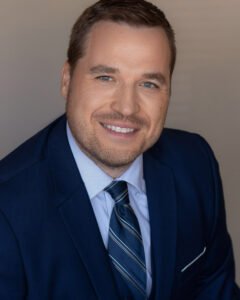
By Dustin Sobolik, CFP – VP, Director Of Investments
Looking past the headlines of the stock rallies of companies focused on artificial intelligence (Microsoft), high-powered computer chips (Nvidia), and obesity drugs (Eli Lilly, Novo Nordisk), there is an opportunity that excites us even more over the next decade. Each of us interacts with it on a daily basis, yet rarely do we ever give it a second thought. I am of course talking about infrastructure. The US government is set to spend roughly $1.25 trillion across transportation, energy, water, and broadband over the next five to ten years. This will be coupled with significant investment from the private sector and should generate strong risk-adjusted returns for years to come. However, to be clear, this isn’t just a U.S. opportunity. There’s meaningful investment happening in infrastructure across the world.
But what exactly constitutes infrastructure investment? Interpretations vary, but generally infrastructure investments should have three important attributes:
- Provide an essential service.
- Clarity over long-term cash flows.
- Be difficult to replicate.
Let’s walk through each of these characteristics:
Provide an essential service.
The assets should be crucial for the functioning of both the economy and society. This means they should be resilient across the business cycle. These are assets like cell towers, data centers, utilities, pipelines, and shipping.
Clarity over long-term cash flows.
Cash flows for these assets should be stable and, ideally, linked to inflation. The assets should have long operational lives with contracted or regulated revenues with high operating margins.
Difficult to replicate.
The assets should require significant up-front investment and have established market positions or even monopolies where they operate.
The last point above is important. Governments and other corporations typically will not let investors run a monopoly or near-monopoly and generate eye-popping returns. However, they will provide a substantial amount of certainty and potentially a good return. Consequently, infrastructure investments have the potential to provide a substantial amount of the market’s upside, with less downside risk. This makes infrastructure a compelling asset for anyone who has a lower risk tolerance than being 100% equity. We have been making a dedicated allocation in many client portfolios to infrastructure investments since late-2019, but some of us have been investing in utilities much longer than that, such as my colleague, Gary Hanson.
So why am I writing an article about infrastructure now? Why didn’t I write the article 5 years ago? Two reasons:
- Because of rising interest rates, public utilities are trading at some of their cheapest valuations in years. It’s not just me saying it, even Morningstar proclaimed utility valuations were the cheapest since 2009.
- The publicly traded universe of high-quality infrastructure assets is shrinking. Many of the assets are being acquired by their peers, pension funds, and private equity.
In light of these dynamics, our investment strategy must adapt, likely involving a greater emphasis on private assets and an expanded investment in infrastructure within client portfolios.
Expect us to explore opportunities in private assets as we aim to enhance portfolio diversification and yield for our clients. Investing in infrastructure represents a prudent means of securing both stability and growth in an ever-evolving market landscape.
If you have questions about investing in private infrastructure, feel free to get in touch with myself or one of the investment professionals at Heartland Trust.
No investment is guaranteed. Other factors than those listed could impact the returns of an asset or asset class.






